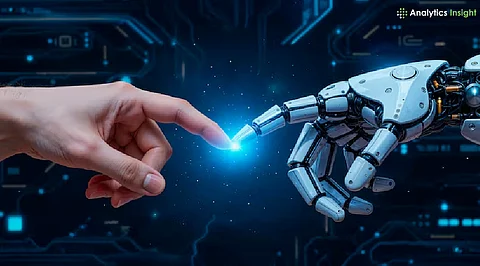

Large Language Models will drive chatbots and text generation in 2025.
AI can invent incorrect info, known as hallucinations, due to data gaps.
Key concepts like neural networks are broken down for easy understanding.
Artificial intelligence is kind of a big deal these days, right? In 2025, it's all over the place – from those chatbots that answer questions to the assistants on our phones. But then there are strange terms like LLMs and hallucinations, and it can get confusing fast.
We're going to make sense of it all, talk about what Large Language Models are, what neural networks do, and look at some of those strange things AI does that might seem a little odd, keeping things simple and easy to understand. This article is for everyone, whether you're new to the whole AI thing or just wondering how it all works.
Large Language Models, or LLMs for short, are like the engine that runs a lot of cool AI stuff these days. Imagine teaching a computer by feeding it tons and tons of books, articles, and websites. That's basically what happens. These models learn from all that data how to put words together in a way that sounds like a human wrote them. If you've ever used a chatbot or a tool that writes emails for you, chances are it's powered by an LLM.
Also Read: Is Your Gmail Storage Full? Here's How to Reclaim 15GB for Free Without Deleting Emails
Here's how it works: If a person types in a question, the LLM uses what it's learned to predict the best answer based on all its training. By 2025, LLMs are doing some seriously advanced stuff. They can help write emails, create code, and even translate languages. What makes them so powerful is that they can handle massive amounts of text and use that info to act like they understand human language. They are not perfect.
Think of neural networks as the brains inside the AI. They're designed to work a bit like the neurons in our own brains, with lots of interconnected parts. These networks take in data, process it, and learn patterns over time. With LLMs, neural networks look at text to figure out what it means. Neural networks can understand if an entity is about a bank.
They can then know if it is a place where people put money or the side of a river. By 2025, these networks will do amazing things like letting AI systems recognize images and understand speech. If it can see and talk, it makes everything smarter and easier to work with.
Also Read: Neural Network Pruning: Latest Approaches and Innovations
Sometimes, AI systems come up with stuff that just isn't true – these are called hallucinations. It's not that the AI is trying to trick people, but because LLMs work by spotting patterns in data, if the info they've been trained on has gaps or biases, they might make things up to fill in the blanks.
For example, if a person asks an AI about something that never happened, it might create a realistic-sounding story about it. While the datasets and fine-tuning get better every year, the hallucinations are still a problem in 2025, mostly. The best thing to do is to double-check anything that the AI tells you to make sure it's correct.
Here are a few other AI terms that are good to know in 2025:
Training Data: This is all the stuff – text, images, sounds – that's used to train an AI. Better data makes the AI perform better.
Fine-Tuning: Giving an AI some extra training for a specific task, like answering questions about medical stuff.
Inference: This is when the AI uses everything it's learned to give you answers or guess what's going to happen.
Overfitting: When an AI learns the training data too well, it starts to struggle when it sees new information.
These ideas will help you get a feel for how AI works and how it's made ready for the real world.
Understanding AI terms will help users understand how it works. By understanding the words and ideas that go with it, AI can be used in better ways. If you know what LLMs do, you can better judge if a chatbot is doing a good job. If you are aware of hallucinations, you will know to check the AI’s answer.
In 2025, AI is a part of many things you interact with daily: virtual assistants keep up with your schedule, systems suggest movies and TV shows, and translation tools let you communicate across languages. When you know what’s going on, it puts you in charge. Plus, it helps you see if the AI is biased or making mistakes, so you can be sure you’re getting reliable results.
In 2025, AI is going to get better at avoiding mistakes and those hallucinations. AI experts are constantly working to improve training. They are using more complete data to improve the context for the AI. Neural networks are getting better and working quicker and smoother all the time. There are always new techniques coming out.
The advances help fine-tune the models for any field, like law and medicine. Even though there are problems from time to time with bias in training data, staying informed helps people understand the constantly shifting AI world.
AI terms are making a positive statement. Words we commonly use like LLMs, hallucinations, and Neural Networks are changing our understanding in 2025. They make it possible for AI to generate conversations and make sure that they are powering education.
Even though there are a couple of shortcomings, it is helpful to understand the technology and make sure that there are no outputs needing to be cautious with. In short and in conclusion, by understanding all the terms related to AI, we can use the tool more confidently!
